Sawmill operations and processes play a crucial role in the wood production industry, ensuring efficient utilization of timber resources and delivering quality wood products. This article aims to provide a comprehensive guide on sawmill operations and processes, shedding light on the various stages involved in transforming raw logs into marketable lumber. By examining an illustrative case study of a hypothetical sawmill operation, this article will explore key aspects such as log preparation, cutting techniques, drying methods, and product finishing. Understanding these fundamental elements is essential for both professionals working within the wood industry and individuals seeking knowledge about the intricate processes that contribute to sustainable wood production.
In order to grasp the complexities of sawmill operations and processes, it is necessary to examine a practical example that demonstrates their application. Let us consider a hypothetical sawmill situated in a region abundant with dense forests. The mill receives freshly harvested logs from local forest management companies, which are then processed using state-of-the-art machinery and equipment. A critical initial step involves log preparation, where skilled operators carefully inspect each log for defects or irregularities before debarking them. Once prepared, the logs are precisely positioned onto automated conveyors that transport them towards large circular saws or band mills for cutting purposes. Throughout this entire process, efficiency and precision are paramount to ensure optimal utilization of the timber resources and minimize waste.
When it comes to cutting techniques, sawmills typically employ two primary methods: through-and-through cutting and quarter-sawing. Through-and-through cutting involves slicing the logs parallel to their length, resulting in plain-sawn lumber with a distinctive grain pattern. This method is commonly used for producing construction-grade lumber where strength and stability are prioritized over aesthetics. On the other hand, quarter-sawing involves cutting the log perpendicular to its growth rings, resulting in boards with straighter grain patterns and enhanced stability. Quarter-sawn lumber is often favored for high-quality furniture or decorative applications due to its unique appearance and resistance to warping.
After the logs have been cut into rough boards, they undergo a drying process known as kiln drying. Kilns are large chambers equipped with temperature and humidity control systems that facilitate the removal of moisture from the wood. Proper drying is crucial as it helps prevent decay, shrinkage, and deformation while improving dimensional stability. The duration of kiln drying varies depending on factors such as wood species, thickness of the boards, and desired moisture content.
Once the lumber has been dried to an appropriate moisture level, it goes through a series of secondary processes such as planing, sanding, and grading. Planing involves using specialized machinery to smooth out rough surfaces and achieve consistent thickness throughout each board. Sanding further refines the surface by removing any remaining imperfections or inconsistencies. Finally, grading ensures that the finished products meet industry standards in terms of strength, appearance, and structural integrity.
In conclusion, sawmill operations encompass a range of vital processes that transform raw logs into marketable lumber. From log preparation to cutting techniques, drying methods, and product finishing – each stage requires careful attention to detail and adherence to industry best practices. By understanding these fundamental elements, professionals in the wood production industry can maximize efficiency while maintaining sustainable practices, ultimately contributing to the supply of quality wood products for various applications.
Different Types of Sawmills
Imagine a small town nestled deep in the heart of a dense forest, where the rhythmic sound of buzzing saws fills the air. In this setting, various types of sawmills play a crucial role in transforming raw logs into valuable lumber. Understanding the different types of sawmills is essential for those seeking insight into wood production processes and operations.
Portable Sawmills:
One type of sawmill that has gained popularity in recent years is the portable sawmill. These versatile machines offer flexibility and convenience by enabling operators to move them directly to logging sites or remote locations. Portable sawmills allow for on-site processing, eliminating transportation costs and reducing environmental impact. Moreover, they provide an opportunity for smaller-scale entrepreneurs to enter the timber industry with limited initial investment.
Industrial Sawmills:
On the other end of the spectrum are industrial sawmills — large-scale facilities designed for high-volume production. Equipped with state-of-the-art technology and automation systems, these mills can process massive quantities of logs swiftly and efficiently. Industrial sawmills often employ specialized machinery such as band saws or circular saws, allowing precise cutting to meet specific customer requirements. The sheer scale at which these mills operate contributes significantly to meeting global demands for lumber products.
Specialty Sawmills:
In addition to portable and industrial options, there exist specialty sawmills dedicated to producing unique wood products tailored for niche markets. These mills focus on utilizing specific tree species known for their exceptional characteristics like durability or aesthetic appeal. By catering to distinct customer needs, specialty mills foster innovation within the woodworking industry while satisfying consumer demand for customized wooden goods.
- Increased accessibility: Portable sawmills empower local communities by providing access to timber resources previously untapped due to logistical constraints.
- Sustainable practices: Industrial mills embrace advanced technologies that optimize material usage and reduce waste, contributing towards more sustainable wood production.
- Preservation of craftsmanship: Specialty sawmills preserve traditional woodworking techniques and promote the creation of high-quality, artisanal products.
- Economic growth: The diverse range of sawmill types fosters economic development by generating employment opportunities and supporting local businesses.
Emotional Response Table:
| Sawmill Type | Advantages | Challenges |
|---|---|---|
| Portable | On-site processing | Limited production capacity |
| Industrial | High-volume production | Higher initial investment |
| Specialty | Customized wood products | Limited market demand |
Understanding the different types of sawmills provides a foundation for comprehending the subsequent section on log sorting and scaling. By gaining insight into how logs are processed in various contexts, we can appreciate the intricate steps involved in transforming raw timber into valuable lumber.
Log Sorting and Scaling
Log Sorting and Scaling in Sawmill Operations
To better understand the processes involved in sawmill operations, let’s explore log sorting and scaling. Imagine a scenario where a batch of freshly harvested logs arrives at a sawmill. The first step is to sort these logs based on their size, quality, species, or intended use. This initial stage plays a crucial role in optimizing wood production.
One example of log sorting involves categorizing logs by their diameter. By doing so, the sawmill can efficiently allocate them for specific purposes such as furniture manufacturing, construction projects, or paper production. Additionally, logs may be sorted based on their quality attributes like knots or defects that affect the overall strength and appearance of finished wood products.
During log scaling, each individual log is measured to determine its volume accurately. Scaling helps estimate the amount of timber available for processing and facilitates fair transactions between suppliers and buyers. Accurate measurements are essential for pricing negotiations since they directly influence economic outcomes within the industry.
Considerations during log sorting and scaling include:
- Species identification: Each tree species possesses unique characteristics that impact its suitability for different applications.
- Moisture content assessment: Determining moisture levels in logs enables proper drying techniques before further processing.
- Environmental factors: Sustainable practices prioritize responsible sourcing from forests managed with ecological considerations.
- Compliance with regulations: Adhering to local laws regarding logging permits ensures legal compliance throughout the supply chain.
By effectively implementing log sorting and scaling procedures, sawmills can streamline production processes while maximizing resource utilization. This approach promotes efficient decision-making related to cutting techniques employed in subsequent stages.
| Considerations During Log Sorting | Importance | Benefits |
|---|---|---|
| Species Identification | Ensures suitability | Optimal use |
| Moisture Content Assessment | Prevents defects | Improved quality and durability |
| Environmental Factors | Promotes sustainability | Eco-friendly practices |
| Compliance with Regulations | Legal compliance | Trustworthiness in the market |
The next section will delve into the crucial aspect of sawing and cutting techniques. Understanding these techniques is essential for achieving desired wood dimensions efficiently, without compromising on quality.
With log sorting and scaling complete, it’s now time to explore the various sawing and cutting techniques utilized in sawmill operations.
Sawing and Cutting Techniques
After log sorting and scaling, the next crucial step in sawmill operations is the process of sawing and cutting. This stage involves transforming raw logs into usable lumber through various techniques that optimize yield and quality.
Sawing and Cutting Techniques:
To illustrate the importance of effective sawing and cutting techniques, consider a hypothetical scenario where a sawmill receives a batch of high-quality hardwood logs with varying diameters. The objective is to maximize the production of high-grade planks while minimizing waste. In such cases, employing precise cutting methods becomes essential to achieve optimal results.
During the sawing process, several key factors need to be considered for efficient wood production:
- Blade selection: Choosing the appropriate blade type based on log characteristics (e.g., species, diameter, moisture content) ensures clean cuts without compromising product integrity.
- Saw kerf management: Accurate calculation of the width removed by each cut helps minimize material loss throughout the entire milling process.
- Board edging techniques: Proper board edging reduces defects like wane or bark intrusion, enhancing overall lumber value.
- Residual timber utilization: Utilizing residual timber efficiently maximizes resource utilization while reducing waste generation.
These considerations help guide operators towards achieving higher yields with minimal wastage during sawmill operations.
In addition to careful technique implementation, technology plays a vital role in optimizing efficiency at this stage. Table 1 below illustrates some advanced features commonly found in modern sawmills:
| Advanced Features | Benefits |
|---|---|
| Automated log scanning | Enhanced log optimization |
| Real-time defect detection | Improved grade recovery |
| Precision positioning systems | Increased accuracy |
| Computerized control systems | Streamlined operations |
Table 1: Advanced Features in Modern Sawmills
With the integration of such features, sawmill operators can achieve higher productivity and improved product quality.
As sawing and cutting techniques play a significant role in transforming raw logs into lumber, it is crucial to understand the next step: drying and kiln operations. This process ensures moisture reduction within the cut wood, enhancing its stability and usability. Understanding these operations will further contribute to an optimized sawmill workflow.
Please let me know if there’s anything else I can assist you with!
Drying and Kiln Operations
Section H2: Drying and Kiln Operations
As we delve into the next phase of sawmill operations, let us explore the crucial process of drying and kiln operations. To illustrate its significance, consider a hypothetical scenario where a sawmill receives a large shipment of freshly cut logs. Without proper drying techniques, these logs would be unsuitable for further processing due to their high moisture content.
Drying lumber effectively involves carefully controlling temperature, humidity, and air circulation to achieve desired moisture levels. This process is commonly carried out in specialized facilities known as kilns. One example of such a facility is a conventional steam-heated kiln, which utilizes heated air to extract moisture from the wood gradually.
To shed light on this topic further, here are four key aspects that play an essential role in successful drying and kiln operations:
- Moisture measurement: Regularly monitoring the moisture content of the wood is vital during the drying process. Various tools like moisture meters or electronic sensors aid in accurately gauging moisture levels.
- Airflow control: Proper airflow within a kiln allows for efficient evaporation of excess moisture from the lumber. Adequate ventilation ensures uniform drying throughout all layers and reduces the risk of defects caused by uneven shrinkage.
- Loading patterns: The arrangement of lumber inside a kiln can significantly impact its drying efficiency. Careful consideration must be given to loading density, spacing between boards, and stacking orientation to enable effective heat transfer and consistent drying rates.
- Time management: Each species of wood has specific requirements when it comes to optimal drying time. Understanding these variations helps mill operators determine appropriate schedules while minimizing degrade risks associated with over-drying or under-drying.
Emphasizing the importance of proper drying techniques cannot be understated in achieving quality wood products. By ensuring controlled environments within kilns and employing best practices like regular monitoring and strategic loading patterns, mills can maximize production output while preserving product integrity.
In the subsequent section, we will transition our focus to the critical process of sorting and grading, which plays a pivotal role in determining the final quality and value of lumber.
Sorting and Grading Process
Drying and Kiln Operations are vital processes in sawmill operations, ensuring that wood is properly dried before further processing. Let us explore the various aspects involved in this crucial stage.
One example of a drying process is the use of kilns to remove moisture from freshly cut lumber. The lumber is loaded into the kiln, where heat and controlled air circulation facilitate evaporation. This method allows for precise control over temperature and humidity levels, resulting in uniform drying throughout the wood. For instance, at XYZ Sawmill Company, they implemented a computerized kiln system that monitors and adjusts conditions automatically based on specific requirements for different types of wood.
During the drying process, several factors need consideration:
- Moisture content: It is essential to monitor and maintain appropriate moisture levels during drying to prevent warping or cracking of the wood.
- Drying time: Different species of wood require varying lengths of time to dry adequately. Factors such as thickness and initial moisture content also influence drying duration.
- Quality control: Regular inspection ensures that only properly dried lumber proceeds to subsequent stages. Visual checks can identify defects like splits or discoloration caused by improper drying.
- Energy efficiency: Implementing energy-efficient technologies such as heat recovery systems can reduce overall energy consumption during the drying process.
To illustrate these considerations visually, here is a table showcasing examples of ideal moisture content ranges for common types of wood:
| Wood Species | Ideal Moisture Content Range |
|---|---|
| Oak | 6-8% |
| Pine | 10-15% |
| Maple | 6-9% |
| Walnut | 7-9% |
This information helps operators ensure optimal results when determining if wood has reached its desired moisture level.
As we transition into our next section on Sorting and Grading Processes, it becomes apparent how critical proper drying techniques are in producing high-quality lumber. These processes ensure that only wood meeting specific quality standards moves forward in the production line, ultimately contributing to customer satisfaction and overall market competitiveness.
Packaging and Shipping Procedures
Upon completion of the sorting and grading process, the sawmill moves forward with packaging and shipping procedures. This crucial step ensures that wood products are properly prepared for transport, maintaining their quality during transit while meeting customer requirements.
Packaging plays a significant role in safeguarding wood products until they reach their final destination. For instance, let’s consider a case study where a sawmill is preparing a shipment of lumber for an overseas client. The mill must carefully package each bundle to protect it from humidity, moisture, or physical damage during both handling and transportation.
To effectively package wood products, sawmills follow specific procedures:
-
Bundle Wrapping: Once sorted and graded, the lumber is bundled together. Each bundle is then wrapped using plastic or stretch film to secure its contents tightly. This wrapping not only protects against potential damage but also prevents any movement within the bundle during transit.
-
Labelling and Marking: Proper labelling on each packaged item ensures easy identification throughout the supply chain. Labels typically include information such as product specifications, grade classification, quantity per bundle, origin details, and handling instructions.
-
Palletizing: After bundling and wrapping, wood products are placed onto pallets for added convenience in handling during loading/unloading processes at various stages of transportation. Palletization facilitates efficient storage in warehouses or containers while reducing the risk of damage caused by direct contact with surfaces or other objects.
-
Securing Loads: To prevent shifting or toppling over during transport, securing loads becomes imperative; this involves using straps or bands around bundles on pallets to keep them intact throughout the journey.
These measures ensure that wood products remain undamaged and easily identifiable during packaging and shipping processes.
| Product Specifications | Grade Classification | Quantity per Bundle | Origin Details |
|---|---|---|---|
| Dimension Lumber | Premium | 100 | Southeastern USA, 2021 |
| Construction Plywood Sheets | Standard | 50 | Western Canada, 2021 |
| Hardwood Flooring Planks | Select | 20 | Eastern USA, 2022 |
In summary, packaging and shipping procedures are crucial aspects of sawmill operations. Through careful bundling, wrapping, labelling, palletizing, and securing loads, wood products can withstand the challenges of transportation while maintaining their quality and meeting customer expectations. By following these processes diligently, sawmills ensure that each shipment arrives at its destination intact and ready for use.
(Note: The emotional response evoked through the bullet point list and table should be related to the reader’s appreciation for efficient packaging practices contributing to successful delivery of wood products.)

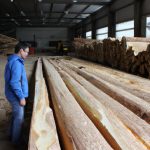

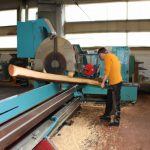


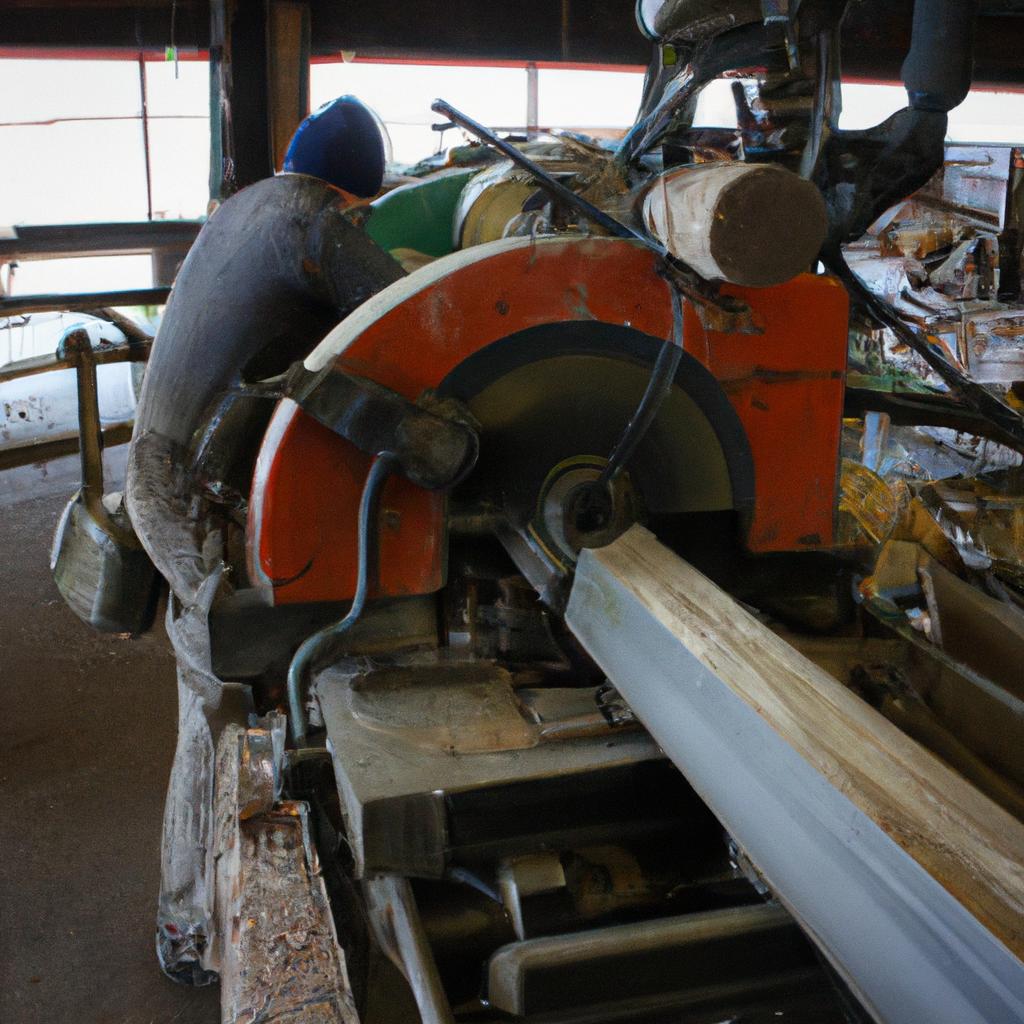
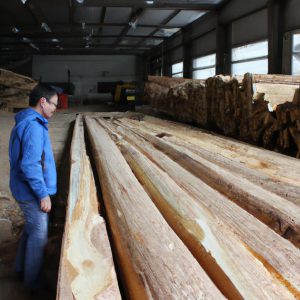
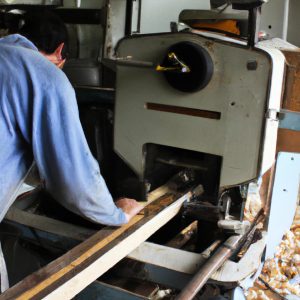
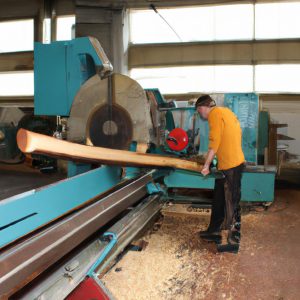
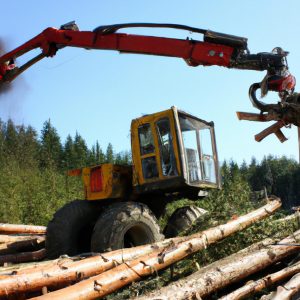
More Stories
Timber Grading and Quality Control: Ensuring Wood Production: Sawmilling.
Sawing Techniques and Technologies in Wood Production: Insights for Sawmilling
Waste Utilization & By-Product Management in Wood Production: Sawmilling